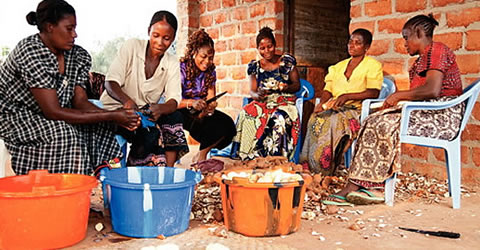
This is a General Conference Odyssey post for the priesthood session of October 1981.
At this conference, Elder L. Tom Perry speaks about trusting the Lord. So, how do we put our trust in Him? The answer is to put into action the gospel of Jesus Christ. We have all the necessary answers and we know what we need to do. The problem is that we let the world interfere too much with our noble desires. The rest of his talk is aimed at the men, encouraging them to take upon them the power of the priesthood. I believe this also applies to women. I think it will be helpful to tweak the rest of Elder Perry’s words and make it sound like he’s talking to the women.
If a woman is limited in her growth and perfection by her ability to use her God-given power, then we must continually strive to use the power that comes from the priesthood.
President Stephen L. Richards taught a threefold definition to priesthood quorums. He said quorums are “first, a class; second, a fraternity; and third, a service unit.” Relief Society also fits into this definition.
First, a class. The Relief Society class is designed for the purpose of teaching us the law of the Lord. Fundamental in this teaching is instruction in our duties as mothers. It is not a time for speculation regarding the mysteries of the world. It is a time of basic, practical, how-to instruction, for which we can find application in our lives. The lessons should teach us how we can become better wives and mothers and teach us our responsibilities to our fellowmen.
In one Relief Society meeting, the lesson that week was on justification and sanctification. The teacher was well prepared to instruct her sisters. Then a question prompted a response which changed the whole course of the lesson. In response to the question, the comment of one of the sisters was, “I have listened with great interest to the lesson material, but it will all be forgotten if we don’t find application to put it into practice.”
She then went on to propose a course of action. The night before, the husband of a member had passed away. The one speaking visited the widow and offered her sympathy. Leaving the home after the visit, she wondered if there was more that could be done to help this woman look over her farm until she made decisions for her future. This proposal led to organizing the ward to help this widow. The balance of the meeting was spent on organizing the project to assist her. The principles of the lesson found an immediate application.
Second, the Relief Society as a fraternity. A challenge was given to have 100% attendance in class (keep in mind some quorums are generally smaller than Relief Societies, so work with my rewriting here).
All diligently came to class except for one sister who had lost her daughter the previous year, and she was having a hard time adjusting to this great loss in her life. She started missing her meetings.
As a Relief Society, the sisters expressed their concern over this sister, and that there was a great hole because of her absence. Asking for ideas, the suggestion was made to go over to her home and hold the meeting there.
They all went to this sister’s home. Songs were sung, expressions of love were shared, and after a kneeling prayer, this sister had tears rolling down her face. She knew of the love her sisters had for her.
Elder Rudger Clawson of the Council of the Twelve once said (and again, I modify it for my purposes): “A Relief Society which meets merely to study lessons, only partially accomplishes its purposes. … The spirit of sisterhood should be the directing force in all the plans and operations of the group. If the spirit is cultivated, wisely and persistently, no other organization will become more attractive to the women.” Let us build a bond of sisterhood for each member.”
Third, the quorum is a service unit. The obligation of membership in our Father in Heaven’s kingdom is to be of service to His children. President Stephen L Richards said:
“The Priesthood is usually simply defined as ‘the power of God delegated to man.’ This definition, I think, is accurate. But for practical purposes, I like to define the Priesthood in terms of service and I frequently call it ‘the perfect plan of service.’ I do so because it seems to me that it is only through the utilization of the divine power conferred on men that they may ever hope to realize the full import and vitality of this endowment. It is an instrument of service. Its uses and purposes are all defined in terms of service and the man who fails to use it is apt to lose it, for we are plainly told by revelation that he who neglects it ‘shall not be counted worthy to stand.’ [D&C 107:100.]”
This can easily be applied to women as well.
Sisters let us teach our women and our young women how to serve.
Let us return to our wards and stakes and evaluate them. Are they functioning as a class to train the sisters in their responsibilities? Are they functioning as a sisterhood to bless the lives of each member? Are they functioning to render service to their families, to the Church, and to the communities in which they are organized?
I love talks that give us bold information to act on.